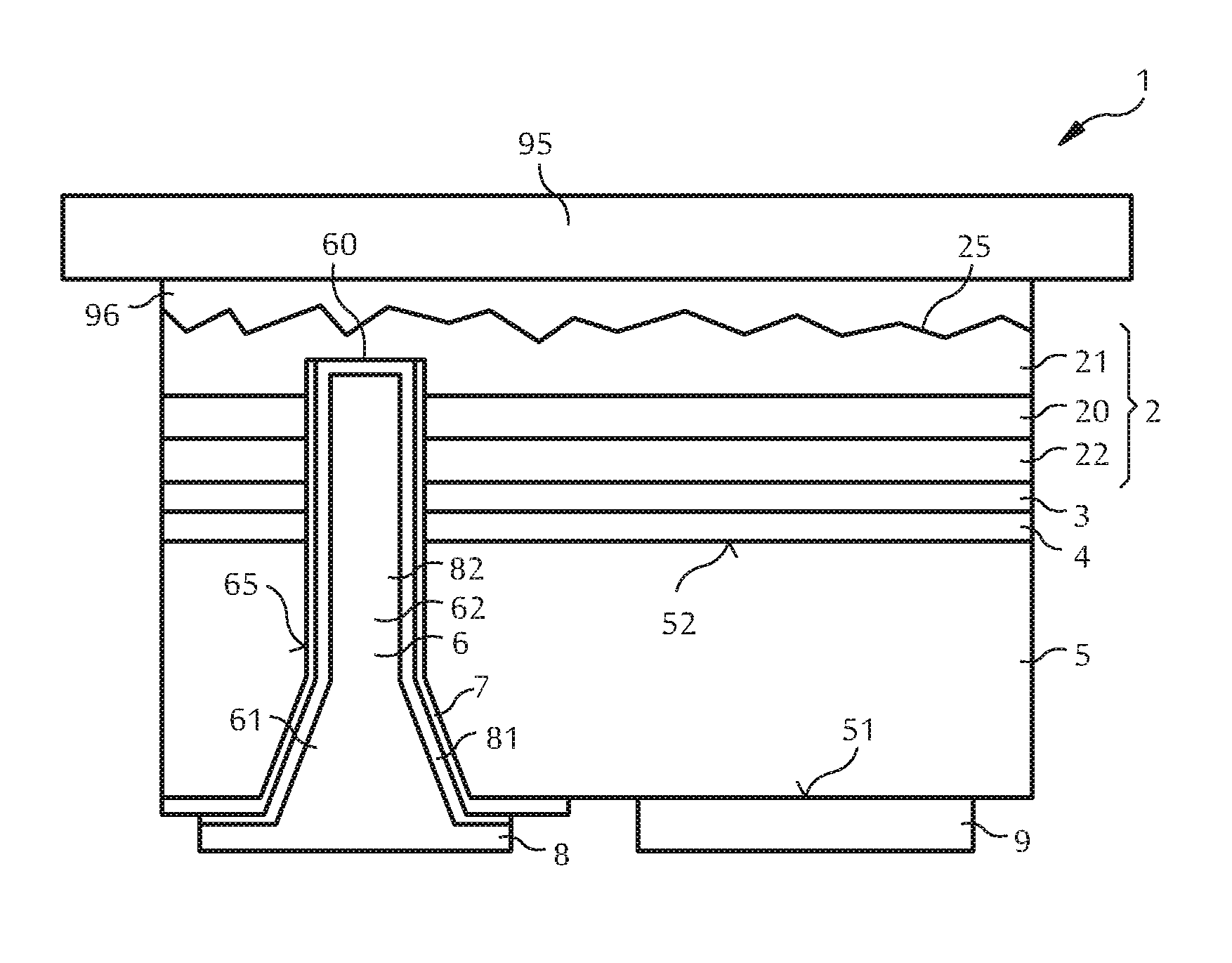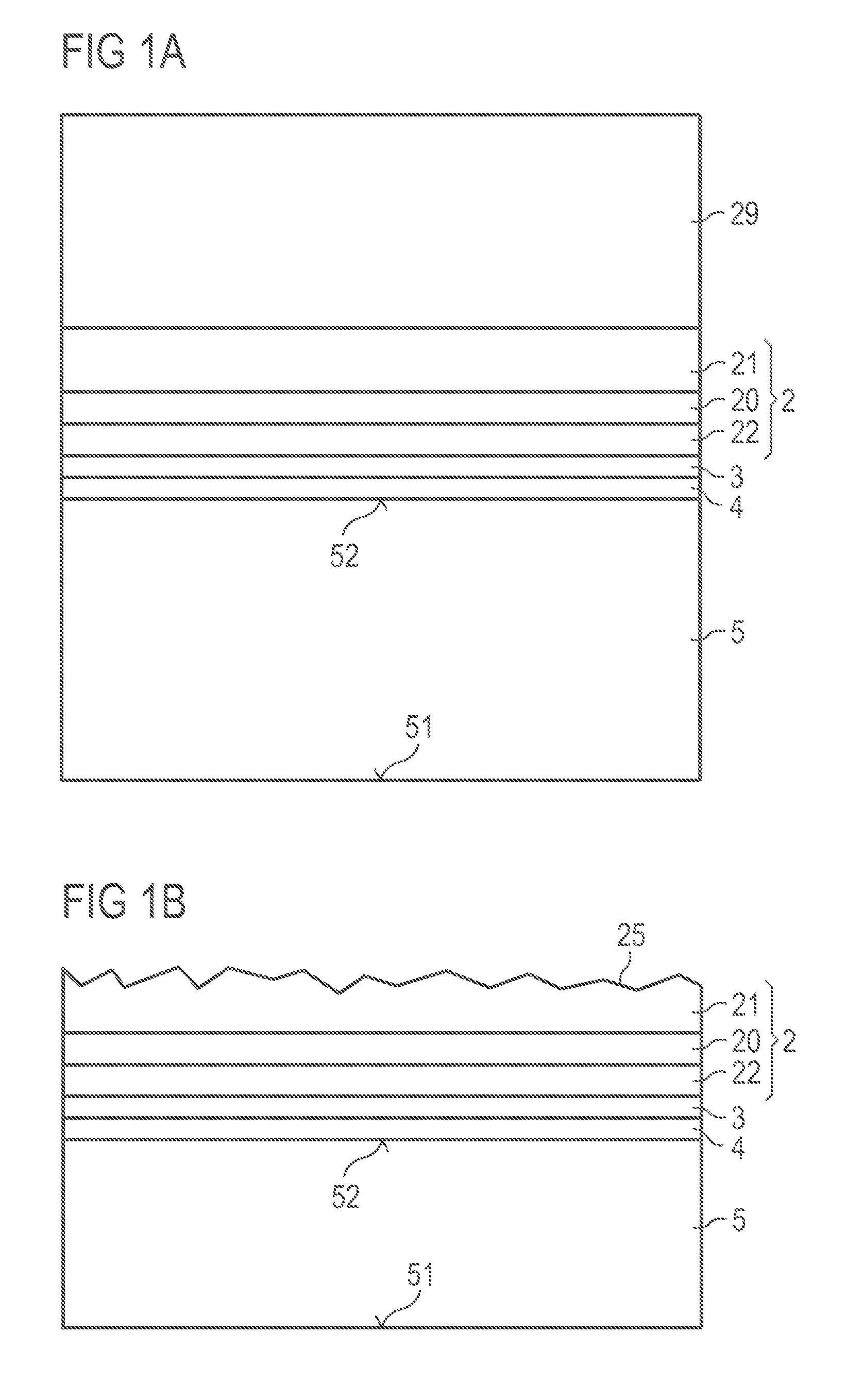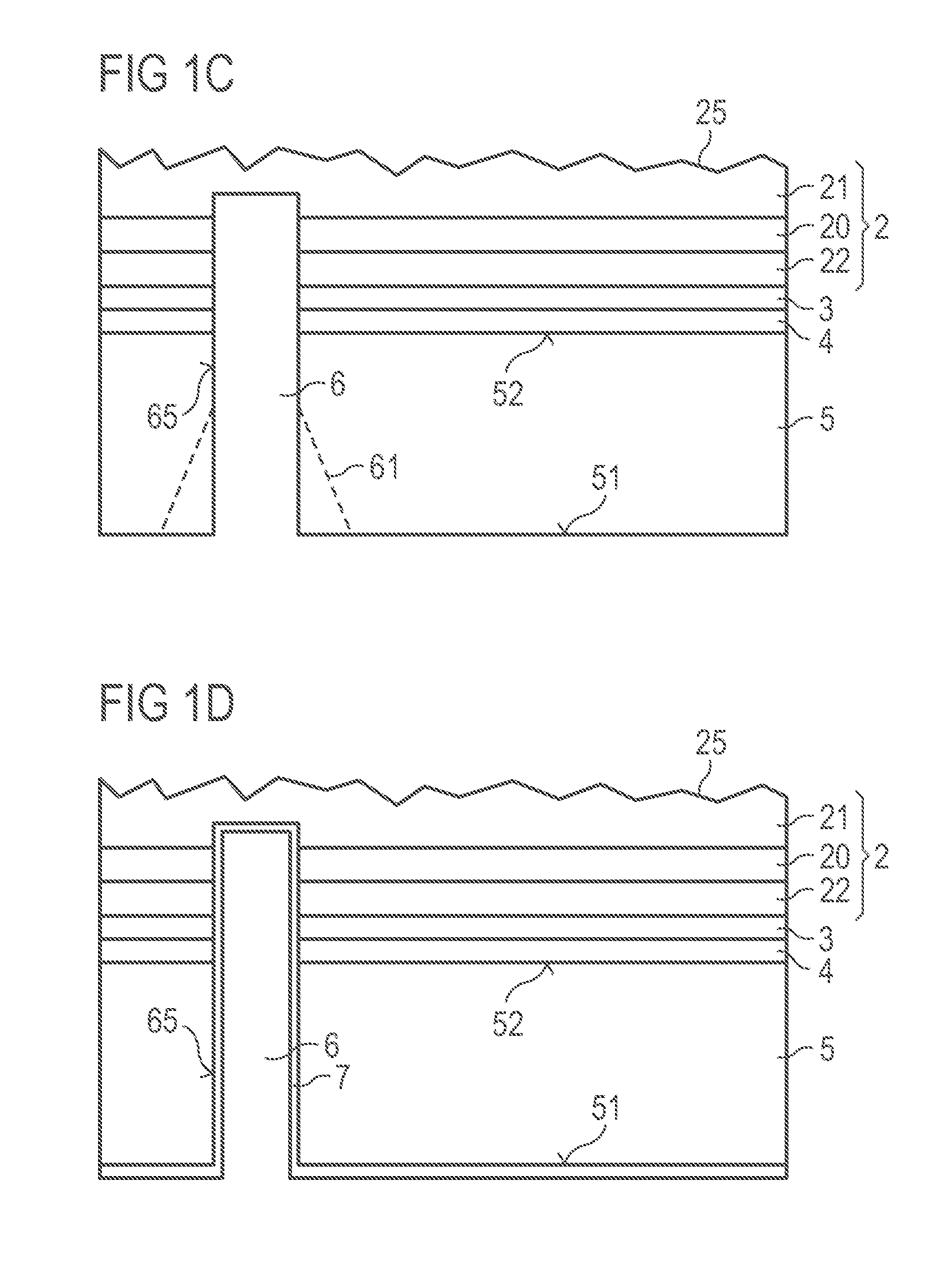Method for fabricating a plurality of opto-electronic semiconductor chips, and opto-electronic semiconductor chip
a technology of optoelectronic semiconductor chips and semiconductor chips, applied in the direction of semiconductor devices, basic electric elements, electrical apparatus, etc., can solve the problems of additional risk of failure, more difficult to obtain compact embodiments of led housings, etc., and achieve simple and cost-effective, good optoelectronic properties, and high efficiency
- Summary
- Abstract
- Description
- Claims
- Application Information
AI Technical Summary
Benefits of technology
Problems solved by technology
Method used
Image
Examples
Embodiment Construction
[0036]A first exemplary embodiment of a method for fabricating optoelectronic semiconductor chips is illustrated schematically with reference to FIGS. 1A to 1H. As shown in FIG. 1A, a semiconductor layer sequence is deposited preferably epitaxially, for example, by MOCVD, on a growth substrate 29. The semiconductor layer sequence has a first semiconductor layer 21 facing the growth substrate, an active region 20 and a second semiconductor layer 22 on a side of the active region that faces the first semiconductor layer 21. The first semiconductor layer and the second semiconductor layer differ from one another with regard to their conduction type. By way of example, the first semiconductor layer can be embodied as n-conducting and the second semiconductor layer as p-conducting, or vice versa. The first semiconductor layer and the second semiconductor layer can each comprise a plurality of partial layers.
[0037]For the sake of simplified illustration, the figures merely show an excerpt...
PUM
 Login to View More
Login to View More Abstract
Description
Claims
Application Information
 Login to View More
Login to View More - R&D
- Intellectual Property
- Life Sciences
- Materials
- Tech Scout
- Unparalleled Data Quality
- Higher Quality Content
- 60% Fewer Hallucinations
Browse by: Latest US Patents, China's latest patents, Technical Efficacy Thesaurus, Application Domain, Technology Topic, Popular Technical Reports.
© 2025 PatSnap. All rights reserved.Legal|Privacy policy|Modern Slavery Act Transparency Statement|Sitemap|About US| Contact US: help@patsnap.com



